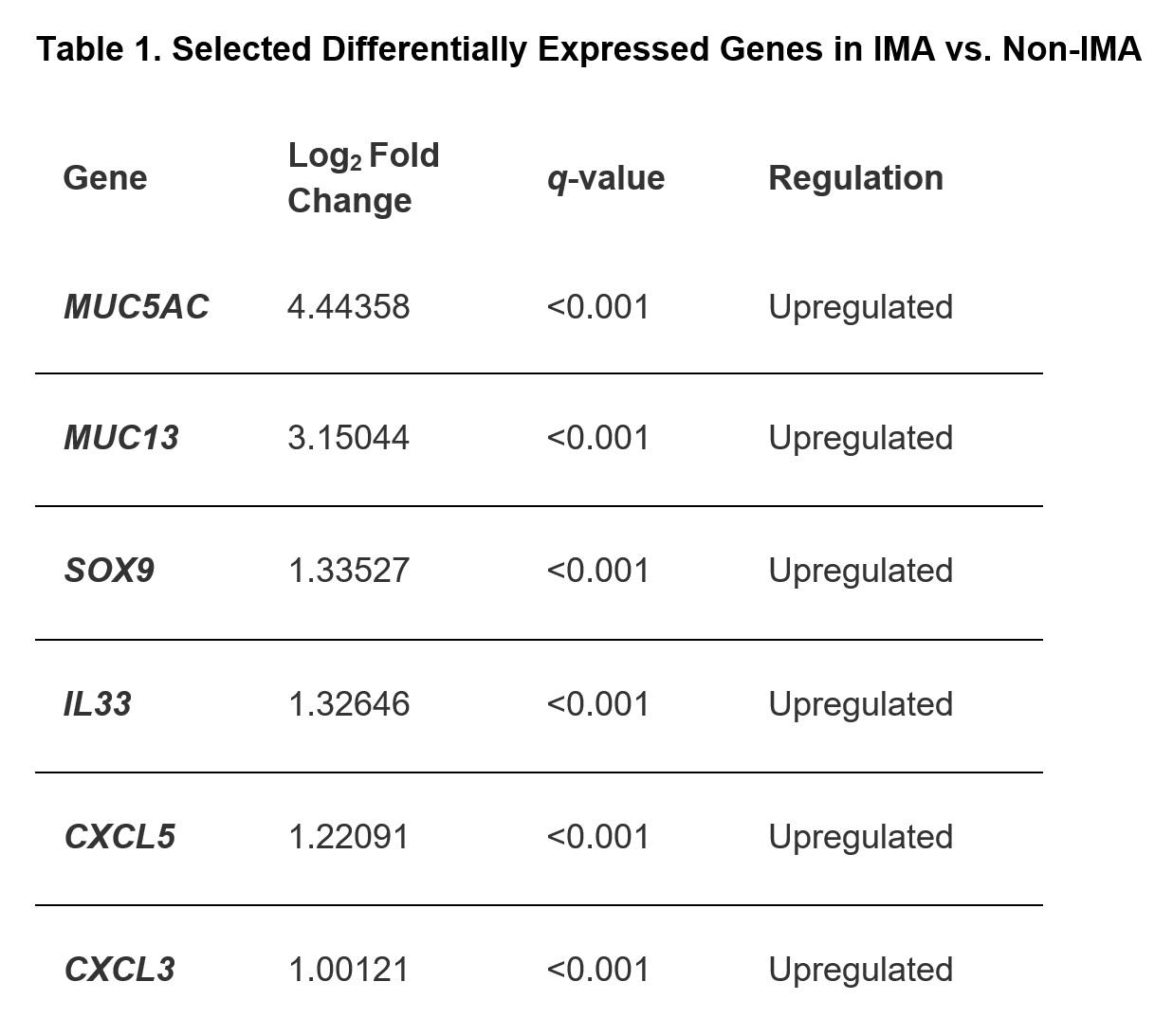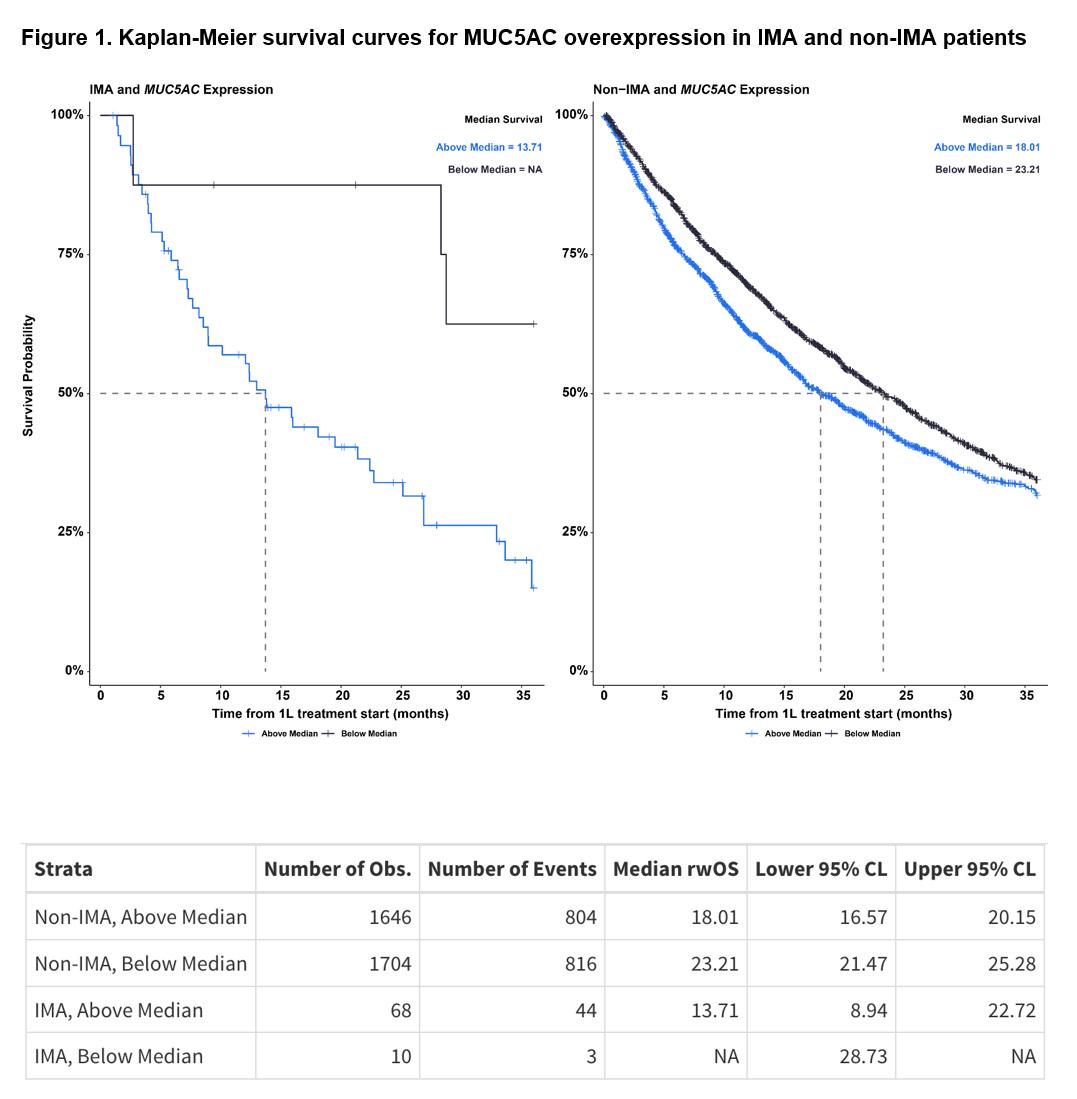-
PROVIDERS
New MRD Medicare Coverage for Select Indications*
*When coverage criteria are met. Additional criteria and exceptions for coverage may apply.
-
LIFE SCIENCES
REGISTER NOW
UPCOMING WEBINAR
Driving enterprise value with RWD -
PATIENTS
It's About Time
View the Tempus vision.
- RESOURCES
-
ABOUT US
View Job Postings
We’re looking for people who can change the world.
- INVESTORS
08/13/2025
Differential Gene Expression and Pathway Analysis of Invasive Mucinous Adenocarcinoma
IASLC WCLC 2025
PRESENTATION
Authors
S. Kim, M. Weitz, J. Kim, W. Woo, A. Dugan, Y.K. Chae
Introduction: Invasive mucinous adenocarcinoma (IMA) is a distinct lung adenocarcinoma subtype with unique clinical behavior, including immunotherapy resistance and high metastatic potential. However, the molecular pathways linking these pathological features to clinical outcomes remain unclear. In this study, we conducted a comprehensive gene expression and pathway analysis to investigate whether mucin-related genes are associated with survival outcomes, evaluating their potential roles as prognostic biomarkers and therapeutic targets in IMA.
Methods: De-identified data records from 17,885 patients with lung adenocarcinoma were identified, including 558 with IMA and 17,327 with non-IMA subtypes. Differential gene expression (DGE) was assessed using Wilcoxon rank-sum tests with Benjamini-Hochberg correction (|log2FC| ≥ 1.0; q≤ 0.05 considered significant), excluding genes with low expression (TPM sum ≤ 20). Real-world overall survival (rwOS) was evaluated with Kaplan-Meier curves and Cox proportional hazards models. Gene set enrichment analysis was conducted via the Enrichr-KG platform using GO, KEGG, and Reactome libraries (q ≤ 0.05 considered significant).
Results: DGE analysis identified 366 genes that were significantly differentially expressed in IMA (342 upregulated, 24 downregulated). Subsequent enrichment analyses identified 96 significantly enriched pathways: 94 linked to upregulated genes and two with downregulated genes. Furthermore, pathway analysis indicated that MUC5AC is closely linked to IL33 and SOX9, while MUC13 shares pathways with CXCL3 and CXCL5, all four of which were significantly upregulated in IMA (Table 1). Among the upregulated genes, elevated MUC5AC expression correlated with poor survival in both IMA and non-IMA cohorts (Figure 1).
Conclusions: These findings suggest that mucin-related genes in IMA modulate immune and metabolic pathways beyond mucin production, as evidenced by their strong network connectivity to regulators such as IL33, SOX9, CXCL3, and CXCL5. Our data highlight that the interconnected pathways among these upregulated genes could underlie the aggressive clinical behavior observed in IMA, warranting further mechanistic and clinical investigation.

